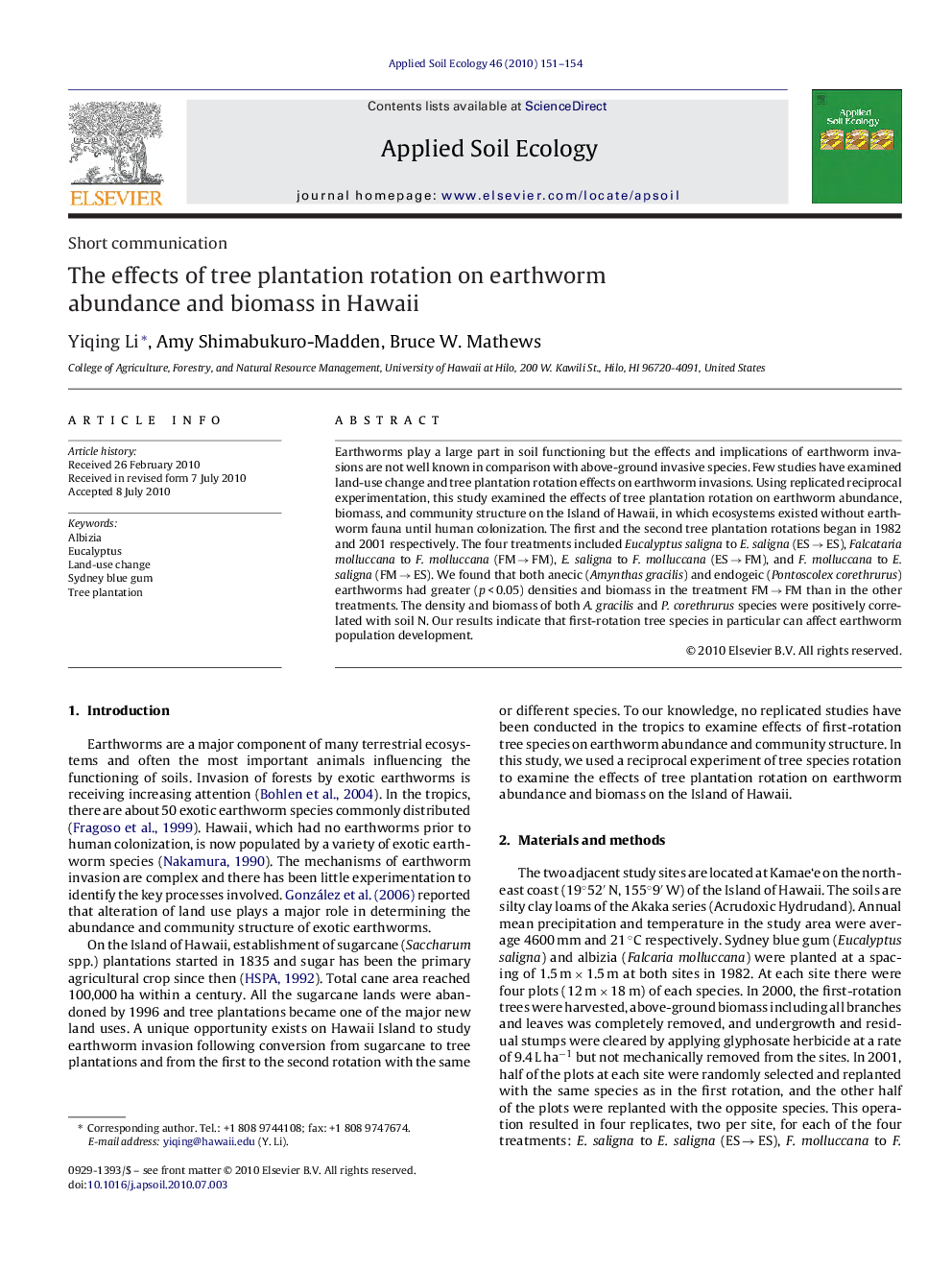| Article ID | Journal | Published Year | Pages | File Type |
|---|---|---|---|---|
| 4382781 | Applied Soil Ecology | 2010 | 4 Pages |
Abstract
Earthworms play a large part in soil functioning but the effects and implications of earthworm invasions are not well known in comparison with above-ground invasive species. Few studies have examined land-use change and tree plantation rotation effects on earthworm invasions. Using replicated reciprocal experimentation, this study examined the effects of tree plantation rotation on earthworm abundance, biomass, and community structure on the Island of Hawaii, in which ecosystems existed without earthworm fauna until human colonization. The first and the second tree plantation rotations began in 1982 and 2001 respectively. The four treatments included Eucalyptus saligna to E. saligna (ES â ES), Falcataria molluccana to F. molluccana (FM â FM), E. saligna to F. molluccana (ES â FM), and F. molluccana to E. saligna (FM â ES). We found that both anecic (Amynthas gracilis) and endogeic (Pontoscolex corethrurus) earthworms had greater (p < 0.05) densities and biomass in the treatment FM â FM than in the other treatments. The density and biomass of both A. gracilis and P. corethrurus species were positively correlated with soil N. Our results indicate that first-rotation tree species in particular can affect earthworm population development.
Related Topics
Life Sciences
Agricultural and Biological Sciences
Ecology, Evolution, Behavior and Systematics
Authors
Yiqing Li, Amy Shimabukuro-Madden, Bruce W. Mathews,
